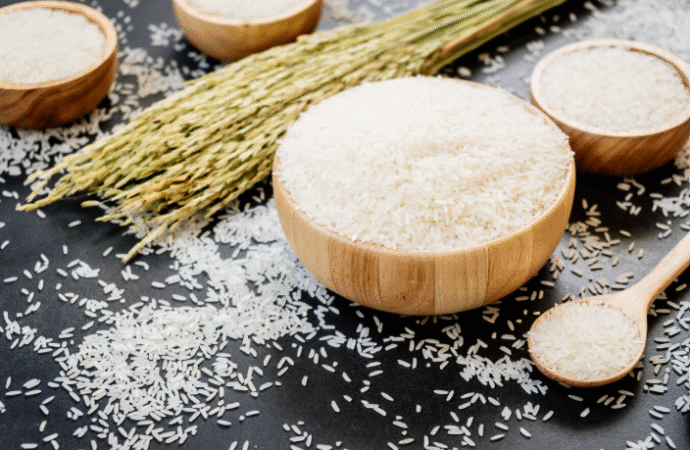China and India lead global rice cultivation, jointly producing more than half of the world’s total. Other key producers include Pakistan, Thailand, Bangladesh, Indonesia, Vietnam, and the United States. Most of these countries are based in Asia and significantly contribute to ensuring food security, especially in regions where rice forms a dietary staple. On a
China and India lead global rice cultivation, jointly producing more than half of the world’s total. Other key producers include Pakistan, Thailand, Bangladesh, Indonesia, Vietnam, and the United States. Most of these countries are based in Asia and significantly contribute to ensuring food security, especially in regions where rice forms a dietary staple.
On a continental scale, Asian countries shipped out about 79.9% of the world’s rice exports in 2024, valued at $31.2 billion. European exporters delivered 7.1% of the global total, followed by North America at 6.4% and Latin America at 5.5% (excluding Mexico but including the Caribbean).
Smaller shares came from regions like Oceania (mainly Australia) at 0.63% and Africa at 0.55%.
List of the Largest Rice Exporting Countries in the World
According to the USDA Foreign Agricultural Service, global rice production rose 1% between 2023 and 2024, reaching 521.52 million metric tonnes. Asia continues to dominate both production and export, maintaining its status as the leading rice-producing continent.
Below are the top 5 rice exporting countries, with China topping the list, followed closely by Bangladesh and India. Other significant exporters play a vital role in the global rice market through their strong agricultural capabilities and well-established export networks.
China
China is the largest rice exporter globally, contributing approximately 28% to world output. For the 2023/2024 season, its production is projected to reach 144.62 million metric tonnes.
With rice serving as a daily staple for more than 1.4 billion people, China allocates vast areas of farmland to rice cultivation, especially in provinces like Jiangsu, Hunan, and Guangdong. The Yangtze River Basin offers optimal conditions for rice farming due to its plentiful water supply and favorable climate.
Government initiatives, including subsidies for growers and investment in high-yield rice varieties, further enhance productivity. Although most of China’s rice is grown for domestic use, the country also exports to nearby Asian nations such as South Korea, Japan, and the Philippines, as well as selected African markets.
Continued modernization of farming practices and the expansion of advanced irrigation systems support China’s steady production growth, ensuring food security at home while contributing to global supply.
India
India holds the top spot in global rice exports, projected to ship around 18 million metric tonnes in the 2024–2025 period.
The country produces a diverse range of rice varieties, including premium Basmati and various non-Basmati types, serving a broad spectrum of international markets. Key importers include Bangladesh, the UAE, Saudi Arabia, and several African countries.
India’s agricultural strength lies in its diverse climate, which supports multiple cropping cycles in major rice-growing states like Punjab, West Bengal, and Andhra Pradesh.
Even with temporary export curbs in 2023 aimed at stabilizing domestic prices, India’s dominance in the global rice trade remained unaffected.
The government supports the sector through input subsidies, fertilizer aid, and investments in irrigation infrastructure. India plays a critical role in feeding populations worldwide as it accounts for 40% of global rice exports.
Bangladesh
Bangladesh produces about 7% of the world’s rice, with an estimated 37 million metric tonnes in the 2023/24 season. As rice is a staple for the country’s population, cultivation is widespread, particularly in the nutrient-rich Ganges Delta.
The country mainly focuses on traditional rice varieties aimed at fulfilling domestic consumption rather than pursuing high-volume exports.
In recent years, government support through seed subsidies and the promotion of high-yielding strains has significantly boosted production. During periods of crop loss due to flooding or extreme weather, Bangladesh imports rice from neighboring India to maintain food security.
While its export volume remains low, Bangladesh’s consistent output ensures regional rice supply chain stability.
Pakistan
Pakistan contributes around 2% to global rice production, with an annual output of 9.87 million metric tonnes. Renowned for its fragrant and high-grade Basmati rice, Pakistan exports mainly to markets in the Middle East, Europe, and Africa.
Rice cultivation thrives in provinces like Punjab and Sindh, where the Indus River provides essential irrigation. These fertile regions play a central role in sustaining and expanding rice production.
Supportive government policies and funding in agricultural research and modern farming technologies help improve yield and export potential. Despite occasional water shortages, Pakistan maintains its reputation as a strong competitor in the international rice trade, particularly for its aromatic and long-grain varieties.
Thailand
Thailand contributes around 4% to global rice production, yielding approximately 20 million metric tonnes annually. It is especially renowned for its premium jasmine rice, which is highly sought after in markets like China, the Middle East, and the United States.
Favorable weather conditions, along with a robust irrigation network, support the country’s strong agricultural output. Rice plays a vital role in Thailand’s economy, with exports forming a significant share of its agricultural revenue.
The Thai government promotes sustainable farming techniques and quality enhancement initiatives to align with international standards. Thailand remains prominent in the global rice trade due to its competitive pricing and dependable product quality.



















Leave a Comment
Your email address will not be published. Required fields are marked with *